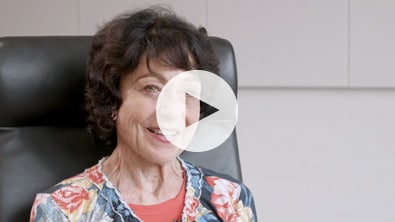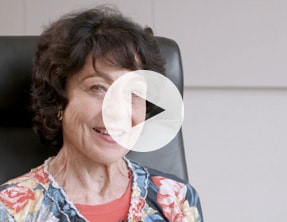Significance and application field of brain function measurement
Brain-function imaging is drawing attention as a new technique for measuring brain activity under close to everyday conditions, particularly for neuroscience research. Functional near-infrared spectroscopy (fNIRS) enables measurements of cerebral functions under close to everyday conditions. As a result, it expands the possibilities of brain function research in various fields, such as Rehabilitation Research and Drug Discovery/Medical Research, including neuroscience, psychiatry and neonatal brain function.
- Measurement Principle by Near Infrared Light
- When nerve activity occurs in the brain, the amount of hemoglobin in the surrounding area changes locally. With fNIRS, oxygenated hemoglobin (Oxy-Hb) and deoxygenated hemoglobin (Deoxy-Hb), which have different absorption wavelengths, can be measured by irradiation with near-infrared light which biopermeability, and relative changes caused by brain activity can be displayed in real time.
-
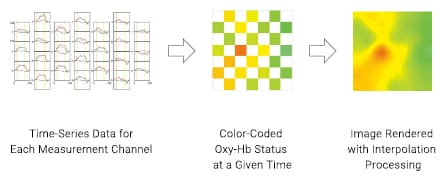
2D Image of Time-Series Data for Each Channel 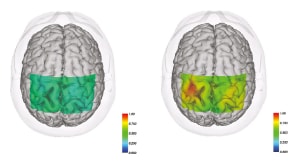
Comparison of Oxy at Rest (left) and
when Tapping Right Finger (right)
Protocol of fNIRS study
-
(1)Wear the holder
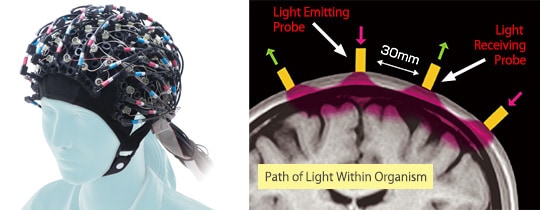
-

(2)Data aquisition with tasks

-

(3)Display the channel data on trend graph and map
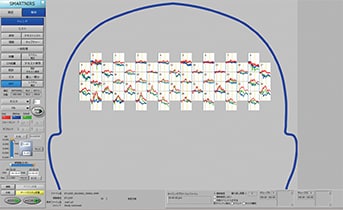
Trend graph 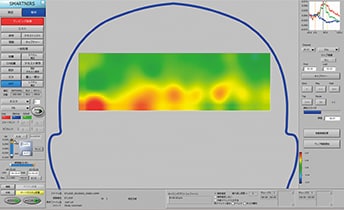
Map -

(4)Process and Analyze data
-
Application research of brain-function imaging in social interactions with dramatic performers

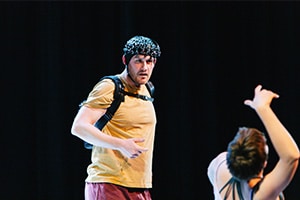
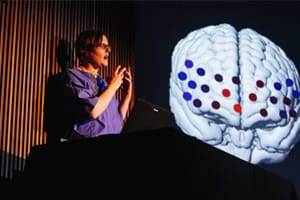
University College of London (UCL) Institute of Cognitive Neuroscience used fNIRS to measure brain activity patterns in actors performing a Shakespeare play. This research is designed to help study the differences in human social cognition and social interactions among people with autism. See more in our Momentum
Courtesy of Flute Theatre- https://flutetheatre.co.uk/
-
Joint Research Partner
“My challenge in the research is to work with new technologies that allow imaging of two people in natural dynamic interaction situations so that we can understand how the brains adjust to situations of real life and social interaction between people. For example, using fNIRS we are studying the neural mechanism while making direct eye contact between two individuals and its specific role in communication. We have the same value system with SHIMADZU that we will be partners for a long time. I'm not going to settle for second-best and neither is SHIMADZU. So we're partners.”
References: Noah, J. A., Zhang, X., Dravida, S., Ono, Y., Naples, J. A., McPartland, J. C., & Hirsch, J. (2020). Real-time eye-to-eye contact is associated with cross-brain neural coupling in angular gyrus. Frontiers in Human Neuroscience 14(19), 1-10. doi: 10.3389/fnhum.2020.00019
Zhang, X., Noah, J. A., Dravida, S., & Hirsch, J. (2020). Optimization of wavelet coherence analysis as a measure of neural synchrony during hyperscanning using functional near-infrared spectroscopy. Neurophotonics, In Press.


